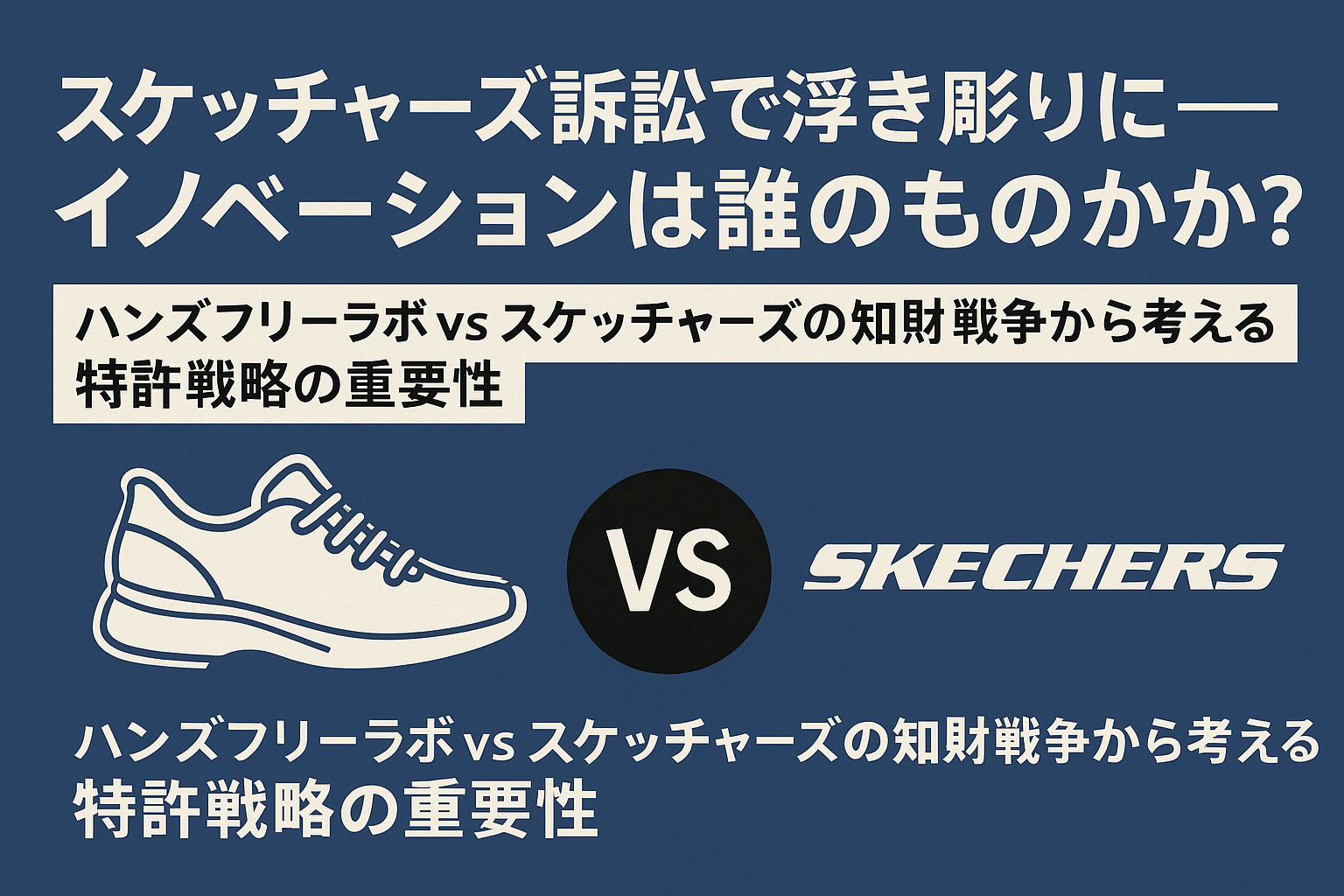The Intellectual Property Battle Between HandsFree Labs and Skechers Highlights the Importance of Patent Strategy
On July 24, 2025, a lawsuit filed in a federal court in Texas sent shockwaves through the footwear industry. The plaintiffs are HandsFree Labs and its affiliated brand, Kizik. The defendant is Skechers, a globally recognized shoe brand. At the heart of the dispute is whether Skechers intentionally copied the hands-free shoe technology that allows wearers to put on shoes without tying laces or using their hands.
A Legal Battle Sparked by a “Just Step In” Revolution
The target of the lawsuit is Skechers’ “Hands Free Slip-In” series. Since its launch in 2022, the product gained widespread attention, especially through Super Bowl commercials, and helped drive Skechers’ 2024 revenue to approximately 1.325 trillion yen. The key driver behind this growth: the very hands-free shoes now in dispute.
Meanwhile, the plaintiff, HandsFree Labs, has focused on developing this hands-free mechanism since founding Kizik in 2017. They have obtained or applied for over 200 patents. The complaint alleges that Skechers infringed on four utility patents and two design patents. In addition to seeking damages, HandsFree Labs is also requesting an injunction to stop sales of the accused products.
Patent Infringement or Inspired Innovation?
This issue goes beyond a simple patent dispute. The question of “imitation or originality” is a deep-seated theme across all industries. While Skechers has not made any public comments so far, if intentional copying is proven, it could severely damage the company’s brand image and future business model.
Another key point: this lawsuit comes just after Skechers’ massive $9.4 billion acquisition by 3G Capital. The case may raise further questions about corporate transparency and compliance standards.
Protecting and Expanding Innovation
HandsFree Labs is not just a product developer but a strategic player aiming to build an ecosystem through technology licensing. They’ve already licensed their innovations to major companies such as Nike and are looking to expand partnerships in the future.
This approach—treating intellectual property as a strategic asset and scaling through licensing—echoes the patent strategies of tech giants like GAFA. Protecting patents is not just a defensive move but a strategic offensive to establish competitive advantage.
Innovation Must Be Used—But Not Stolen
For developers, having their innovation adopted and recognized in the market is a victory. But if that recognition doesn’t translate into fair compensation, who would take the risk to innovate?
This case is more than a matter of shoe design. It is a case study that challenges us to think about how innovation and intellectual property should be handled in today’s world. As consumers, we should look beyond surface-level design differences and consider who created the technology behind the products we use.

